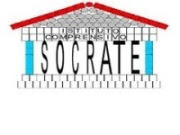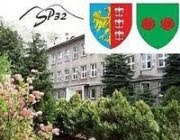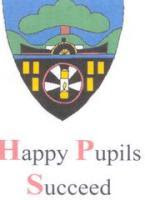Our school at Television CyBC ( Cyprus Broadcast Corporation)
Thursday 7 July 2011
DIMOTIKO SXOLEIO AGIAS NAPAS CYPRUS
Posted by congeo at 18:55 1 comments
Wednesday 15 June 2011
DIMOTIKO SXOLEIO AGIAS NAPAS CYPRUS
Posted by congeo at 14:57 3 comments
Monday 6 June 2011
Eurodance 2011! Results
The voting process has been completed and the results are as follows:
1st DIMOTIKO SXOLEIO - AGIAS NAPAS CYPRUS - 103 points
2nd = 5th Primary School of Florina – Greece - 90 points
2nd = Sebolido Kindergarten - Penafiel – Portugal - 90 points
2nd = GEDMINAI MAIN SCHOOL - KLAIPEDA – LITHUANIA - 90 points
5th Szkoła Podstawowa nr 32 Bielsko-Biala, Poland - 89 points
6th Spetalen School – Norway - 85 points
7th Special School No. 7 - Romania - 82 points
8th Istituto Statale “E. Montale” – Italy 81 points
9th Tojais Kindergarten - Penafiel – Portugal - 80 points
10th Kohtla-Jarve Co-Educational Gymnasium – Estonia - 79 points
11th = CEIP GINES MORATA (ALMERIA) – SPAIN - 74 points
11th = Larbert Village Primary School – Scotland - 74 points
13th CEIP 8 de Abril – Spain - 72 points
14th John Paul II Junior High School in Daleszyce, Poland - 66 points
15th Primary School of R.S. Mouries – Greece - 52 points
The winner of Eurodance 2011 is DIMOTIKO SXOLEIO - AGIAS NAPAS CYPRUS with 103 points!!!
A huge 'thank you' to everyone who participated in this project. All of the dances were fantastic and we hope you enjoyed the experience. We plan to be back for Eurodance 2012 next year!
Posted by Head of Muir Primary School at 08:28 3 comments
Sunday 5 June 2011
HELLO FROM SPAIN AGAIN
Sorry but the last vídeo has a problem with the music, and this is the good version.
I hope you can forgive us.
Thank you.
Posted by Maribel at 11:04 0 comments
Saturday 4 June 2011
Larbert Village Primary School - Scotland
This is the competition entry for Larbert Village Primary School - Scotland.
Posted by Anonymous at 19:00 0 comments
Friday 3 June 2011
5th Primary School of Florina, Greece
Hello!
Finally we are here! We are introducing are city to you with the following video.
Welcome to Florina!
AFTER THE WEDDING CEREMONY
SYRTOS DANCE
Syrtos is the most popular dance throughout Greece. It is line dance, done with the dancers in a curving line holding hands, facing right. The dancer at the right end of the line is the leader. In some parts of syrtos, the dancers hold a handkerchief. After the wedding ceremony, guests and relatives dance Syrtos while the wedding couple exits the church.
ZARAMO DANCE
The second dance Zaramo, is a dance from the northern Greek region of Macedonia, common in Florina prefecture. The dance is done in two or more separate lines, men in one line and women in the other. The lead dancers perform Zaramo while having “Bougatses” on their heads. Bougatses are the traditional loaves of sweet bread that the bride bakes for the wedding ceremony.
OUR FINAL ENTRY
CREW
Orchestra
Georgios Skopakis - Clarino
Dimitris Athanasiou - Corneta
Pavlos Skopakis - Tabourlo
Ilias Skopakis - Ntaouli
Choreographers
Giannis Konstantinou
Ira Kolloni
Class Teacher
Voula Golia
Camera Coordinators
Vasiliki Kalfa
Kyriakos Parlapanidis
Konstantinos Styliadis
Thanks for watching!
Posted by Voula Golia at 19:19 1 comments
CEIP 8 DE ABRIL from SPAIN: "Las Sevillanas"
Posted by Maribel at 18:18 1 comments
Spetalen School , Norway
This is our dance, we wish you all the best of luck in Eurodance 2011.
6th grade and Hilde:-)
Posted by Hilde Øen at 17:10 2 comments
Thursday 2 June 2011
Our performance for contest (Sebolido Kindergarten - Penafiel - Portugal)
Sebolido kindergarten is inside a Primary school with 50 children (14+36). The kindergarten group has children with 3, 4 and 5 years old. This dance is a modern folk dance who is singing by "Diabo na Cruz" (a special group about intervention music).
Posted by Fernanda Cristina Gonçalves at 23:35 1 comments
Our final performance for contest Eurodance2011 (Tojais Kindergarten - Penafiel - Portugal)
Posted by Fernanda Cristina Gonçalves at 23:00 2 comments
Wednesday 1 June 2011
OUR SINGER
Posted by MARJURADO at 12:49 0 comments
Tuesday 31 May 2011
Our performance for the contest (Tojais Kindergarten - Penafiel - Portugal)
Posted by Fernanda Cristina Gonçalves at 10:34 0 comments
Monday 30 May 2011
Our first try... (Tojais Kindergarten - Penafiel - Portugal)
Posted by Fernanda Cristina Gonçalves at 22:59 0 comments
DIMOTIKO SXOLEIO AGIAS NAPAS CYPRUS -"STAMNA" DANCE
Posted by congeo at 19:15 0 comments
Sunday 29 May 2011
LITHUANIAN FOLK DANCE
Posted by Saulius at 16:42 1 comments
Saturday 28 May 2011
Special School No. 7 - Romania.
Posted by Head of Muir Primary School at 19:10 1 comments
Thursday 26 May 2011
Italian traditional dance "Trescone" - Istituto Statale “E. Montale” - Italy
Trescone
For many years the commonly held belief in this country has been that the body of Italian folk music contains little more than "the" tarantella, Santa Lucia, and a few other choreographed dances and songs in proper Italian. Many other traditional dances have survived in our regions and among them Trescone, which was very popular in the Tuscan countryside. It is a really old dance probably introduced in Italy by the Germans around the year 1000 or even before and the name refers to the threshing the corn with your feet, a very common activity in rural Italy. In this courting dance the movements of the women are very graceful while those of the men are quite awkward. Thanks to the project the students have had the opportunity to get in touch with this almost forgotten world and they hope you will enjoy “Trescone” with them.
Posted by Francesca Mancini at 07:48 1 comments
Saturday 14 May 2011
COMPETITION ENTRY, Szkoła Podstawowa nr 32 Bielsko-Biala, Poland
COMPETITION ENTRY
Primary School No 32, Bielsko-Biala, Poland
1. DANCE OF POLISH HIGHLANDERS
2. MODERN DANCE
Posted by SP32Bielsko-Biała,Poland at 11:32 1 comments
Monday 9 May 2011
With the delay from Estonia
A little about working moments learning dance:
1. First-grade students learn basic dance movement Cha-Cha.
2. Second-grade and third-grade students complete the track and learn hand turn your dance-partner.
Thank you for your attention!
Posted by Olga at 10:22 1 comments
Sunday 8 May 2011
Eurodance 2011 - competition extended!
We have decided to extend the Eurodance 2011! competition by two weeks to allow schools a little more time to prepare their dances.
Videos of your performances should now be uploaded to the blog by Friday 3rd June 2011.
All schools should then watch the completed performances and score each school out of 10, except their own, on the online voting system by Friday 10th June 2011. The scores will be added together and the winner posted on the blog.
Posted by Head of Muir Primary School at 14:52 0 comments
Wednesday 4 May 2011
HI FROM VALENCIA
You can watch the video in english or in spanish, which do you choose
Posted by Maribel at 22:05 2 comments
Labels: Valencia
Tuesday 3 May 2011
Athersley South Primary School, England
Hi everyone!
We are from Athersley South Primary School in England. We are all aged 9 - 11 and have been taking part in an after school dance class run by our fantastic teacher Miss Cotton.
We cannot wait to show you our dance. We have chosen to do disco as it origins lay mainly in the UK, although the USA also had an influence. We hope you enjoy it! We will upload it soon!
Posted by Miss Magor at 15:35 0 comments
Monday 2 May 2011
Hallglen Primary School - Scotland
This short video contains lots of pictures of our school. We hope you enjoy the tour around Hallglen Primary School in Scotland.
Music: Kevin MacLeod
Posted by Head of Muir Primary School at 12:23 0 comments
John Paul II Junior High School in Daleszyce, Poland
This is the competition entry from John Paul II Junior High School in Daleszyce, Poland.
Posted by Head of Muir Primary School at 11:45 0 comments
THIS IS OUR SONG "Si vas pa la mar"
Posted by MARJURADO at 10:14 0 comments
Sunday 1 May 2011
DIMOTIKO SXOLEIO AGIAS NAPAS CYPRUS -OUR DANCE
A long time ago the basic need for clean water for the residents of Cyprus was not considered an easy task like it is in our days. The reason for this was because the houses were not equipped with clean running water from the tap and therefore people had to go to the central fountain of the village or town and carry water in clay water jars called "kouza" to their houses.
This was the job of the young girls of each household since the boys were involved in cultivation and animal herding.
During those times the mere communication between a young man and a young woman was a great insult to both their families. Young people of the opposite sex were not allowed to speak or even look at each other. Youngsters took advantage of chores like filling up the “kouza” at the fountain or herding the animals in the fields, to meet with their loved one.
This is somewhat how our own story begins in this dance that we are about to present to you. The dance of the “kouza” is the love story between a young couple that met at their village fountain. In his effort to go closer to the girl that he loves, the young man causes the girl to drop her clay jar and break it. This incident will become the villages’ new gossip and will ‘hopelessly’ drive the young couple to marriage
Posted by congeo at 10:52 2 comments
Monday 25 April 2011
Larbert Village Primary School




















Our school is called Larbert Village Primary School. Our school is situated in a large village/small town just outside of Falkirk which is about 40 minutes from our capital city Edinburgh. Larbert Village has approximately 330 pupils including 66 in the nursery. We also have an enhanced provision to help support children who need additional support.
We have recently had a new extension which gave us a lovely new ICT Suite, Gym Hall, Nursery, Dining Hall, Meeting Room, Office and 6 new classrooms. We study lots of different subjects at our school; Maths, English, French, P.E., I.C.T., Science, Geography, International Education, ECO Schools, Music, Drama and Art.
We are in Primary 4. There are 32 to of us. Our teacher is called Mrs Webster and our ICT teacher is called Mrs Willox they will both be helping us to create our Eurodance entry.
This is the second year our school has taken part in the Eurodance Project. We are very excited to learn all about your schools and watch your dances.
From Everyone in Primary 4
Posted by Anonymous at 13:56 0 comments
Tuesday 12 April 2011
Szkoła Podstawowa nr 32, Bielsko-Biała, POLAND
It is nice to see all the wonderful schools that presented us their dances last year. Welcome back :)
And HELLO to all new schools! We're looking forward to seeing all your dances.
We are going to present a folk dance of Beskidy Mountains region - this is where we live:)
Posted by SP32Bielsko-Biała,Poland at 17:51 0 comments
Sunday 10 April 2011
Saturday 9 April 2011
Greetings from Daleszyce. This is our presentation. And we love your presentations too, particularly those video ones. Last year we visited the city Porici near Nappoli, so greetings to the Institute from Italy. A beautiful video! http://www.youtube.com/watch?v=nlVYUYgqkJ8
Posted by Gimnazjum im. Jana Pawla II at 15:55 0 comments
John Paul II High School in Daleszyce, Poland
Hello everyone,
we are ready with our dance. Thanks to the idea of this eTwinning project more and more students want to dance our national dance. Look! Maybe we are the biggest dancing group on this blog. It is not easy to dance. Hope you will all like it!Mrs.M.Cedro and M. Rosinska supported the students with their knowledge and experience. And our Headmaster, Mr. Jan Cedro dances in the first pair.
Greetings from POland.
Posted by Gimnazjum im. Jana Pawla II at 15:29 0 comments
Sunday 3 April 2011
Greetings from 6th grade, Spetalen school, Norway.
Posted by Hilde Øen at 19:49 2 comments
Saturday 2 April 2011
Friday 1 April 2011
Istituto Comprensivo Socrate - Italy
Posted by Irene at 09:03 0 comments
France - College Andre Le Gourhan
Hello everybody! We are a junior high school in the South West of France. Our small city is located near Sarlat next to the famous prehistorical site of Lascaux. We are pupils from 12 to 14 from different classes. Our school is quite small (about 300 children). This is an advantage because it’s friendly. Some teachers are strict, others are nice. We’ve got foreign pupils from Belgium, Great Britain, Venezuela and Austria. We are interested in participating to the Eurodance 2011 project. We’d like to have contacts with other pupils from different countries to compare our ways of living and cultures. 
Posted by Head of Muir Primary School at 08:28 0 comments
Special School nr. 7, Bucharest - Romania
Welcome! We are glad to take part in the second edition of Eurodance 2011. We are a group of pupils from Special School nr. 7, Bucharest, Romania, with ages between 6 and 14 years. This year we will present you a suite with elements from the dances found in the southern part of Romania. The coordinating teacher will be Mrs. Carmen Şerbănescu. 
Posted by Head of Muir Primary School at 08:26 0 comments
Thursday 31 March 2011
Hi, from Spain!
Posted by Maribel at 20:57 0 comments
Labels: CEIP 8 DE ABRIL, SPAIN, Valencia
Monday 28 March 2011
Kohtla-Järve Co-Educational Gymnasium
We are pleased to participate in the project Eurodance 2011. This project will involve children from age 7 to 11. We are sure that we will get great pleasure from activities in the project.
Posted by Olga at 12:36 0 comments
Sunday 27 March 2011
Hustopece primary School - The Czech Republic
Hello everyone, we are the primary school from Hustopece. Our team has 19 girls and 10 boys from 6 to 14 years.
We are happy to take part in the project Eurodance again.
We would like to present a folk dance Verbunk and Vrtena - typical dance from South Moravia.
| A slideshow by Smilebox |
Posted by Pája at 18:43 0 comments
Saturday 26 March 2011
Istituto Statale E.Montale III ALT
This is our class. Here we are in our school garden.
In our school we study many foreign languages, and we love getting in touch with other students all over the world.
We are twenty seventeen-year-old students: fifteen girls and five boys. We love taking part in projects and international initiatives. We have recently taken part in a beautiful Comenius meeting with students coming from eight different countries and we have had a great time with them. Our school is located in Pontedera a small town in the centre of Italy, between Pisa and Florence.
The leaning tower in Pisa is one of our best known symbols.
leaning tower in Pisa is one of our best known symbols.
Our region is really beautiful and we love it very much. It is full of art and lovely landscapes. We decided to take part in this interesting project together with our Ph E. teacher and we are rehearsing very seriously.
Traditional dances however are not really popular among young people in Pontedera. We will send our video to the local authorities too, so we hope to be able to contribute to the revival of traditional dances in Tuscany
Posted by Francesca Mancini at 07:31 0 comments
Sunday 20 March 2011
"Malhão" (JI Tojais)

Our dance is a popular and simple dance in the north of Portugal.The name "Malhão" probably had its origin in some agricultural instrument and it danced a special choreography, men and women had queude up, face to face. They're approaching and turn away and beat the rhythm with their feet. The end of the dance is when they closed all the wheel and jumped together.
http://sotaodaines.chrome.pt/sotao/karaoke_o_malhao.html
Posted by Fernanda Cristina Gonçalves at 17:43 0 comments
This is our portuguese team - JI Tojais (sorry...miss 5 children - we are 20)
Posted by Fernanda Cristina Gonçalves at 17:17 0 comments







































